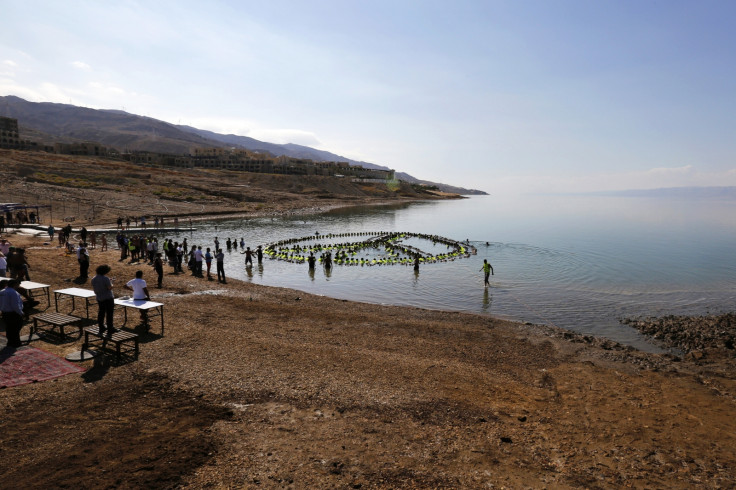Dead Sea sinkholes increasing in number as water level recedes

Sinkholes are gathering up fast on the banks of the Dead Sea, posing danger to tourists drawn by the healing powers of the mineral laden waters.
This is happening because fresh groundwater is rising up and dissolving the salt to leave behind large cavities underground.
The sinkholes are forming above this, Hanan Ginat, a geologist and academic chairman of the Dead Sea and Arava Research Center, in Israel told Live Science.
The Dead Sea water surface is currently receding by about three feet (one metre) per year mostly due to diversion of water from the Jordan river and mineral mining in the south.
First observed in the 70s, the number of sinkholes along the Dead Sea banks is now increasing and there are almost 4000 today.
They can be as deep as 82 feet deep and 131 feet in diameter. Some of them join up with nearby holes to form dangerously giant ones.
The holes can open up without warning. Systems to forecast their appearance are complicated, Ginat said.
Another geologist Eli Raz, who has studied the sinkhole problem in depth says that many of these developed along seismic fault lines in the Jordan Rift Valley. Inside these faults, the salts are less stable and dissolve faster in the rising freshwater to form the gaping holes.
Situated between Israel and the Palestinian territories to the west, and Jordan to the east, the Dead Sea is famous for its extreme salinity (34% salt), and for its lowest elevation on Earth at 1,407 feet below sea level.
Proposals for a canal running from the Red Sea to the Dead Sea could bring in much-needed salt water to the Dead Sea besides meeting the main objective of providing water to Jordan, Israel and the Palestinian territories.
Israel and Jordan approved the first stage of the project last month, Ginat said.
Sinkholes have also appeared in Siberia where it has been linked to gas emissions from beneath following a thawing of the permafrost.
Sinkholes can occur naturally when an underground cavern collapses, often after heavy rain or flooding. They can also be caused by drought when alterations in the water table level result in chasms.
Chasms occur when soluble rock breaks down under effect of rainfall or groundwater.
They can be avoided with proper urban planning of sewage systems that leave space for groundwater systems.
© Copyright IBTimes 2025. All rights reserved.





















